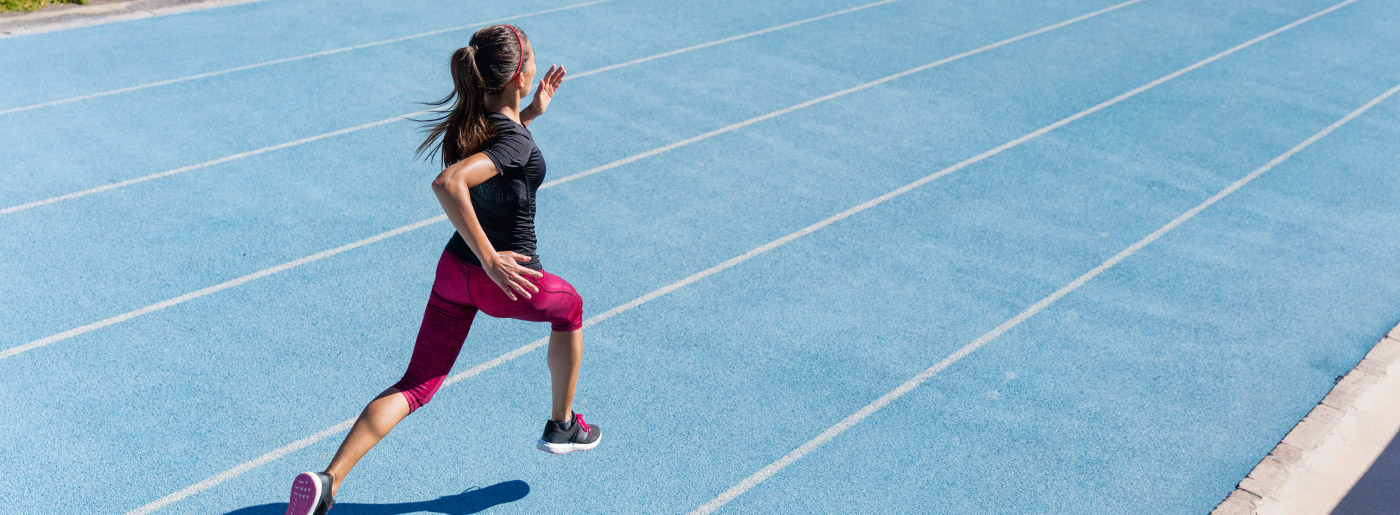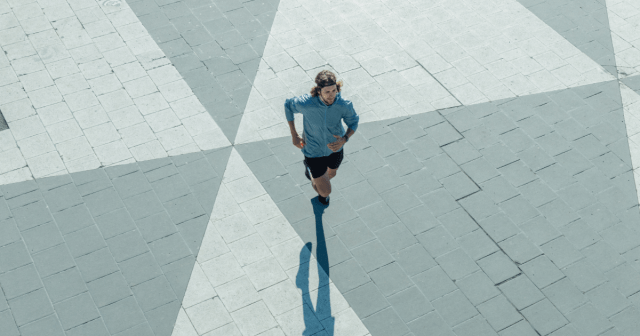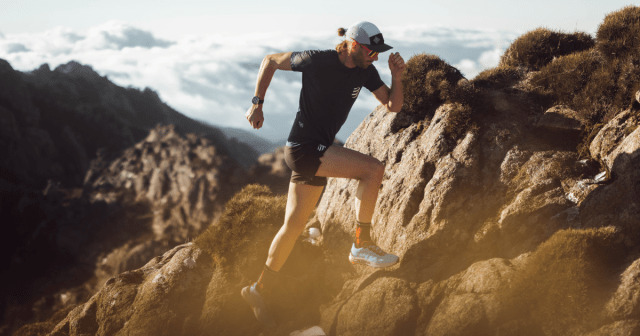A wise man once said with great enthusiasm, “I wanna go fast.” Sure, that “wise man” may have been the fictional racecar driver Ricky Bobby in Talladega Nights: The Ballad of Ricky Bobby, but Will Ferrell’s character was onto something. He knew that with high speed comes a great thrill, a major rush, and, in some cases, a podium.
But how does that translate to running? If you’ve been wondering how to run faster and you’re ready to put in the work, picking up the pace will be doable, fun, and rewarding – but it won’t be easy.
“Usain Bolt is the world’s fastest human, and a large part of that is because of genetics,” says Scott Carvin, coach at Mile High Run Club in New York City. “Of course, he worked extremely hard to be the best, but for the vast majority of the world, we could do every workout Bolt did and still never be the same athlete. He is genetically predisposed to be freakishly fast. But what you can do is maximize your own potential.” Here’s how.
“Your maximum speed is most easily defined in running by your maximum stride length (the distance between when the left foot strikes to the next time it strikes) and your turnover rate (how quickly the legs can complete the full revolution from foot strike to toe off and back),” Carvin explains. “The faster you can turn over your legs, the faster you can run, and if each stride within that turnover is longer the faster still.” But since you can’t grow longer legs or change your genetics, runners have to find other ways to run faster and increase speed – namely by maximizing that stride length and turnover rate.
“The key,” Carvin says, “is to create more mobility in both the hips and ankles. To lengthen our stride, we want to be able to spend more time in the air on every stride, and to do this, the hip and ankle need a full range of motion, which many of us lack. This mobility work is similar to running in the sense that it will not make long-term change happen immediately.”
But, the more you practice, the sooner you’ll see results. “If you get on a strict regimen of mobility and speed work, you can see results in as little as two weeks,” Carvin explains. Start by adding these pace-pushing, coach-approved workouts to your running routine.
Sprints
“Take yourself to maximum effort speed on the road, a track, or a treadmill,” Carvin says. “Time yourself for that maximum effort push, and then rest fully and repeat until your times start to diminish. This leaves a lot of options, but you can’t get faster if you don’t practice running fast.”
Uphill Sprints or Stairs
“I love both options,” Carvin says. “As you ascent, think about how the incline or the stairs force your stride to become shorter, keeping the knees high, the turnover quick, and the grip in the forefoot.”
Downhill Sprints
“These force good form, make you trust the body, and work your maximum effort,” Carvin says. “Most people start to lean back on a downhill, causing huge amounts of shearing force on the knees, which isn’t good. Instead, trust the body and lean into the hill. This should almost feel as if you’re going to fall forward. Your stride will lengthen – focus on keeping the feet under the center of gravity.”
Add one of these types of speed workouts into your plan once a week, and then build from there, Carvin recommends. “Take the focus, form, and connection you feel to your body in these workouts and then apply them into your longer runs at lower intensities.”
If you liked this post, don’t forget to share so that others can find it, too.
Please note that the information provided in the Polar Blog articles cannot replace individual advice from health professionals. Please consult your physician before starting a new fitness program.





